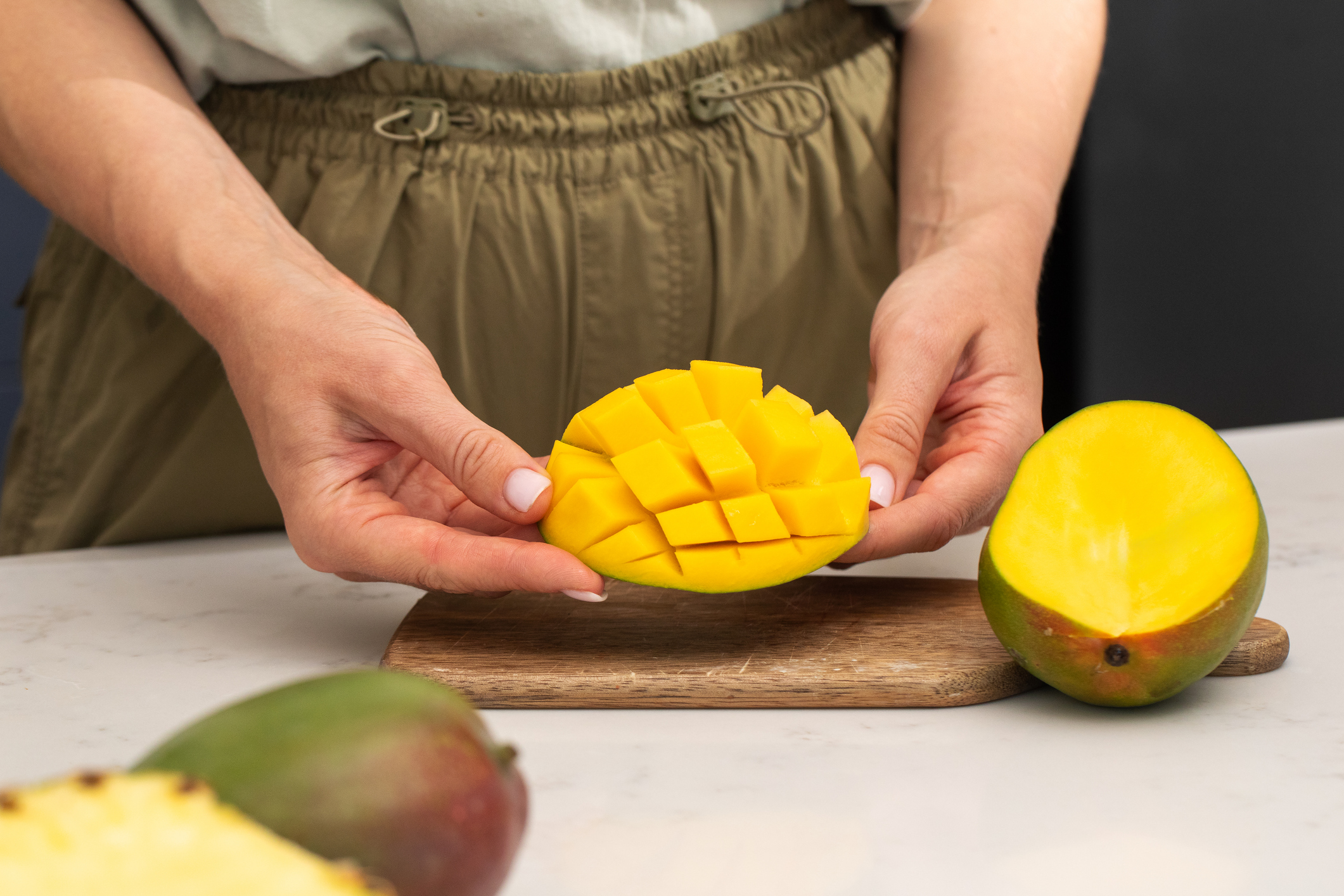In the Know with Mango
When it comes to mangos, choosing the right one can be somewhat difficult for a first-timer. What mango is good? Is it going to be sweet? How long can I keep it before it goes bad? What variety is this?
There are many questions shoppers need answered in order to have the best mango experience possible. Today we’re going to walk you through the tips and truths about getting the perfect mango for your next meal.
Varieties
There are over 6 main varieties imported into the U.S., all in season during different periods, so no matter the time of year, you’re bound to find some at your grocery store.
Right now in approaching fall, Kents and Keitt mangos are in peak availability. Additionally, Tommy Atkins, a wider distributed variety is also in peak availability. Today we’ll feature Kent mangos and their appealing characteristics.
Taste
Kent mangos are usually a hit among mango eaters in the U.S. The texture is very creamy, though not as creamy as a Honey mango, and is on the sweeter side in taste. Generally a ripe Kent will be very easy to cut.
Kent, Keitt, and Honey mangos share a similar texture – one that’s creamier due to less fibers. These mangos typically go great as a compliment to other dishes, in salsa or as a topping. The softness and sweet taste help balance out a savory dish.
Well what about the other mangos?
Some varieties, like Tommy Atkins, Francis, and Haden mangos have more prominent fibers, making the texture different from the less-fibery mangos. These mangos tend to maintain their firmness more and can be a little messier when slicing and dicing. When cutting a Tommy Atkins for instance, you’re likely to see the fibers (long strings) throughout. These mangos tend to be a little less sweet than the creamy mangos.
The Truth About Varieties in Stores
The three varieties in peak availability – Kent, Keitt, and Tommy Atkins all look relatively similar in appearance, and are likely mixed in together at the grocery store. So, how can you tell the difference?
- Look at the PLU sticker. A handful of companies will label their mangos with the type of variety.
- Analyze the color and size. Kents tend to be a little greener than Tommy Atkins, which usually have more red tones than green. Keitt mangos are usually larger than Kents and Tommy Atkins.
- Ask a produce associate. When in doubt, ask for help! More and more produce employees are becoming mango-aware. There’s a good chance they’ll be able to help
How do I pick the right mango?
All mangos are similar in terms of ripeness – they get softer as they ripen! Always take a feel to judge the mango’s ripeness level. Here are a few things to consider to pick a delicious mango:
- Don’t focus on appearance. As we mentioned, all mangos look different. Their look is usually more of an indicator of variety, not ripeness.
- Consider when you’ll eat the mango. There is no one way to get the right mango. If you won’t be cutting the mango until later in the week, get a firmer mango so it ripens right on time. If you plan on enjoying the fruit as soon as you get home, look for a slightly soft mango.
- Black dots you may see on a mango does not mean that it’s bad. Dark speckles are usually an indicator of moisture while the mango was still on the tree. Those little black dots do not penetrate the flesh and will not ruin the delicious taste.
- Watch out for cold mangos. Sometimes in stores, mangos are kept in a cooler for convenience, and unfortunately this may affect the taste of the mangos you choose. It might come natural to select chilled produced items, but look for mangos that are at room temperature.
Is there anything else I should know before heading to the store?
Yes, while we’re approaching fall, and Honey mangos are only available in some stores, these small yellow mangos push the envelope for ripeness cues. While most mangos are ripe when soft, Honey mangos are ripe when wrinkly. They kind of defy the rules a little bit as you can see. If a Honey mango isn’t wrinkly, it’s not its sweetest.
Also, some mangos are enjoyed green – or unripe. Many cultures in Thailand, India, Hawaii, Colombia, the Philippines, and many, many more, use unripe mangos in their cooking. These mangos are eaten prematurely and are sour in taste. If you’re looking for unripe, green, mangos, we recommend heading to your local Indian, Asian or Spanish grocery store to see what they have in stock.
No matter your craving, mangos are sure to do the trick! For information on all the varieties and their ripeness cues, head over to our Varieties Page!
Let us know what mangos you’re eating and finding in stores below in our comments section!

